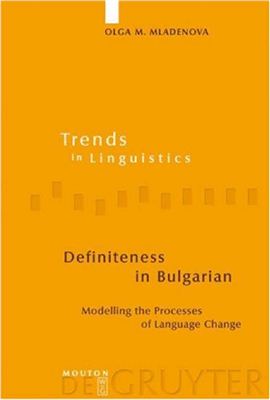Издательство: Mouton de Gruyter
Год издания: 2007
Количество страниц: 472
Язык: English
In its evolution from a synthetic to an analytic language, Bulgarian acquired a grammaticalized category of definiteness. The book presents the first attempt to explore in detail how this happened by comparing the earliest Mode Bulgarian texts with contemporary dialect and standard Bulgarian data. The basic units of analysis are the various types of nominal structures headed by nouns or pronouns. The analysis requires the strict terminological disentanglement of form from content and the adoption of a default inheritance model of definiteness that allow the exhaustive classification and tagging of nominal structures encountered in the texts. Tagging makes it possible to apply quantitative analysis to nominal structure and to assess the types available in the early texts from a current native-speaker perspective.
Год издания: 2007
Количество страниц: 472
Язык: English
In its evolution from a synthetic to an analytic language, Bulgarian acquired a grammaticalized category of definiteness. The book presents the first attempt to explore in detail how this happened by comparing the earliest Mode Bulgarian texts with contemporary dialect and standard Bulgarian data. The basic units of analysis are the various types of nominal structures headed by nouns or pronouns. The analysis requires the strict terminological disentanglement of form from content and the adoption of a default inheritance model of definiteness that allow the exhaustive classification and tagging of nominal structures encountered in the texts. Tagging makes it possible to apply quantitative analysis to nominal structure and to assess the types available in the early texts from a current native-speaker perspective.

